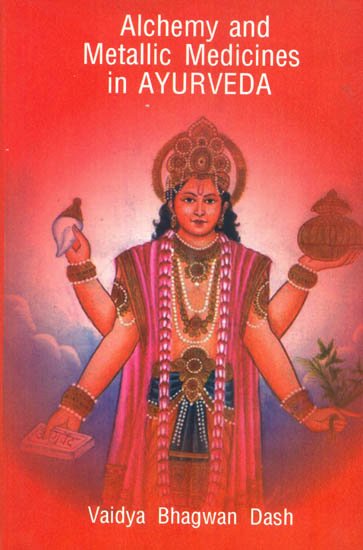Alchemy and Metallic Medicines in Ayurveda
author: Vaidya Bhagwan Dash
edition: 2003, Concept Publishing Company
pages: 236
ISBN-10: 8170220777
ISBN-13: 9788170220770
Topic: Rasashastra
Introduction (4): Purpose of processing
As has been mentioned before, during the classical age, metals and minerals were impregnated with decoctions, and juice of various types of vegetable drugs, and then reduced to be state of fine particle by grinding. During the later period, this technique of processing metals and minerals reached a very high stage of sophistication and scientific accuracy. For any drug to be therapeutically effective, it is necessary that it should be assimilated specially by the affected tissues. Metals and minerals, according to mahabhautika composition have a different structure than the tissue elements of the body. If these are used in raw form or even in unprocessed powder from, they will not be digested, absorbed, metabolised and assimilated to the tissue cells of the body. Thus, they will be therapeutically ineffective. On the other hand, these heterogeneous drugs are likely to produce serious toxic effects in the body. To make them non-toxic, to make them easily digestible and absorbable, to make them suitable for metabolic changes and assimilable by the tissue cells, and to make them therapeutically potent, several methods for processing have been prescribed. Depending upon the nature of the metal or mineral, they are first of all cleaned of their physical and chemical impurities and them triturated with the juice or decoctions of drugs. This impregnation or trituration loosens the molecular cohesiveness and helps the metal to break into fine particles during the subsequent processing. This also neutralises the toxic effects and makes the metal easily digestible and assimilable. The vegetable drugs which are used in the form of decoction or juice have their own therapeutic effects which are imparted to these metals during processing. Thereafter, the mental is dried and the moisture portion is taken out. These are made into small lumps and kept inside two earthen plates (sarava). The borders of these two earthen plates containing lumps of metallic paste are kept together face to face and sealed with the help of seven layers of mudsmeared cloth. These earthen plates are kept exposed to sun till they are completely dried. These are then kept in a pit covered with the required number of cow-dung-cakes and ignited. Depending upon the heat requirement of each metal, the size of the pit and the number of cow-dung-cakes to used vary. Then it is allowed to cool of its own and the earthen plates are removed from the heap of cow-dung ash. The seal is, thereafter, carefully, removed and metallic lumps are taken out for subsequent processing. Depending upon the nature of the metal and the disease for which they are meant to be used, the process is repeated for several times.
The first part of this processing with decoction, juice, etc. is called sodhana (lit. purification) and the later part of this processing is called, marana (lit. killing) or reducing metal to a fine state of division while changing its physical and chemical nature.
The above mentioned methods vary from one metal to the other. Details of these methods will be described in respective sections.
